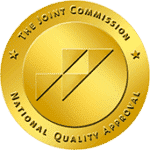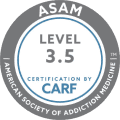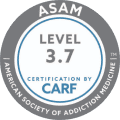What Is Xanax Detox and Withdrawal? Xanax Addiction Treatment in Massachusetts
Xanax detox is an essential treatment for people who are physically dependent on Xanax, which is the brand name medication for a benzodiazepine called alprazolam. This detox treatment minimizes Xanax withdrawal symptoms and related complications to help patients experience a safer, more comfortable recovery from drug dependence.
Keep reading to learn more about Xanax detox and withdrawal and where to find high-quality addiction treatment in Massachusetts.
What Is Xanax Detox?
Xanax detox is the first stage of addiction treatment for people in recovery from Xanax dependence or Xanax use disorder. The goal of treatment is to manage withdrawal symptoms and prevent related life-threatening complications, including seizures, hallucinations, and suicidal thoughts.
Xanax detox usually takes place in an inpatient medical-like setting at a drug rehab center or drug detox center. Patients who receive Xanax detox are monitored closely by nurses and doctors who can anticipate and treat symptoms before they progress.
This treatment addresses only physical dependence on Xanax and not the behaviors that drive addiction or the lifestyle complications caused by addiction. Many patients who complete Xanax detox end up transitioning into a drug rehab program to receive treatment for Xanax addiction.
Who Needs Xanax Detox?
Xanax detox can benefit and treat anyone who has become physically dependent on Xanax. According to the National Institute on Drug Abuse (NIDA), a person is physically dependent on Xanax if they experience withdrawal symptoms when they suddenly stop using Xanax or when they use Xanax to avoid withdrawal symptoms.
Dependence is not the same as addiction, and not everyone who needs Xanax detox suffers from addiction. Many people who become dependent on Xanax were using this drug responsibly and correctly as prescribed by their doctors.
According to the National Library of Medicine (NLM), Xanax and other medications with alprazolam can cause physical dependence when used for several days or weeks. Xanax is commonly prescribed to treat anxiety disorders and panic disorder and may also be used to treat depression, agoraphobia, and premenstrual syndrome. People who use Xanax for a few weeks to treat these conditions are highly likely to become physically dependent.
Some people may misuse Xanax to feel more calm, relaxed, and sleepy. For example, a person may use another person’s Xanax or crush and snort their own prescribed Xanax to experience immediate relief and relaxation. These are ways prescription medications are commonly misused.
What Is the Xanax Detox and Withdrawal Timeline?
Stopping Xanax abruptly can cause withdrawal symptoms that may last for several weeks to longer than one year, reports the NLM. However, the World Health Organization states that Xanax withdrawal symptoms typically last two to four weeks or longer in some cases.
In most instances, Xanax withdrawal symptoms begin within 24 to 48 hours after the last dose.
Everyone who goes through Xanax detox will experience their own withdrawal timeline based on factors including age, metabolism, and the length of time they were using Xanax.
Other factors that can affect the Xanax withdrawal timeline include:
- Weight and body fat percentage
- Genetics and family medical history
- Frequency and length of Xanax use
- Amount of Xanax used daily
- Immune system health
- Nutrition and diet
- Mental illness
- Polydrug use (using Xanax with alcohol, opioids, or other substances)
- One or more other health problems
The nurses and doctors at a Xanax detox center will usually consider the above factors when developing a patient’s detox treatment. Though it may be difficult to determine exactly how long withdrawal and detox will take, some treatment centers can provide a rough estimate based on a person’s symptoms and history with Xanax use.
What Symptoms Occur During Xanax Detox and Withdrawal?
Xanax can produce a range of withdrawal symptoms when stopped abruptly. Common symptoms include:
- Anxiety
- Restlessness
- Insomnia
- Agitation
- Irritability
- Poor concentration
- Poor memory
- Muscle aches
- Muscle tightness
According to the NLM and a 2018 study published in the Journal of Addiction Medicine, Xanax withdrawal symptoms may also include:
- Malaise (general discomfort)
- Weakness
- Rapid heart rate
- Dizziness
- Ringing in the ears
- Shaking
- Muscle twitching
- Unusual movements
- Changes in mental health
- Depression
- Burning or prickling sensation in the extremities
- Hallucinations
- Thoughts of violence or suicide
- Overexcitement
- Psychosis (losing touch with reality)
- Seizures
- Drug cravings
Many of the above Xanax withdrawal symptoms occur only when people discontinue this drug abruptly. Xanax detox treatment can usually minimize and prevent many of these symptoms with the use of medications or a tapering schedule.
What Happens During Xanax Detox?
Xanax detox is usually performed as an inpatient treatment at a hospital or residential rehab center. First, patients are settled into their rooms, where they will stay for the duration of withdrawal. Then, Xanax is replaced right away with an equivalent amount of diazepam, which is another benzodiazepine that has a far lower abuse potential than Xanax. A 5 mg dose of diazepam is equivalent to a 0.5 mg dose of Xanax.
Xanax detox is performed using a tapering schedule, which involves taking diazepam in gradually decreasing amounts over several weeks. This detox method helps relieve withdrawal symptoms and prevent the development of seizures.
The patient’s dose of diazepam is given to the patient daily in three divided doses for four to seven days. Starting the following week, the patient’s daily diazepam dosage is slightly reduced to support tapering.
Patients may spend the first few days of Xanax detox resting and relaxing as their bodies adjust to lower doses. Nurses and doctors monitor patients closely for the entirety of tapering to ensure withdrawal symptoms are minimized, and there is no risk for seizures. If patients experience severe symptoms, tapering may be slightly delayed until symptoms are controlled, after which point the dosage will be reduced again.
Some patients may begin therapy for Xanax addiction while going through detox and tapering, while others may need to spend this time sleeping and relaxing. Patients may engage in mild activities such as walking or meditating during this time, though patients are not encouraged to do strenuous exercises or activities that could cause setbacks. At the end of their Xanax detox treatments, patients are encouraged to receive therapy to prevent a relapse back to Xanax use.
What Medications Are Used in Xanax Detox?
In most instances, the only medication used in Xanax detox is diazepam, which is used to replace Xanax and support safe tapering and withdrawal. However, patients who experience other persistent withdrawal symptoms may be given other medications that specifically treat those symptoms.
For example, patients who experience nausea and vomiting may be given a medication called metoclopramide, which is typically used to treat symptoms of gastroesophageal reflux disease (GERD). Patients who experience headaches or other aches and pains may be given an over-the-counter pain reliever like ibuprofen.
Medications used in Xanax detox are given on a case-by-case basis, depending on a patient’s symptoms and medical history.

Is It Safe for People to Detox From Xanax at Home?
Some people may try to taper off Xanax by themselves after reading or learning about it on the Internet or from their primary care doctors. However, an at-home Xanax detox can be extremely risky and dangerous due to the risk of seizures, rapid heart rate, psychosis, and thoughts of violence and suicide. Strong cravings for Xanax and the risk of relapse and overdose are other potential dangers associated with detoxing from Xanax at home.
At-home Xanax detox is not recommended for any patient who is physically dependent on this medication. Though tapering off Xanax may seem like an easy process, patients often cannot exchange Xanax with diazepam and are not trained to anticipate, prevent, and treat withdrawal symptoms. Xanax detox should always be conducted in a controlled medical environment, where patients can be monitored by nurses and doctors who can keep them safe and reduce their risk for complications.
What Is Rebound Anxiety and Insomnia, and Why Does It Happen During Xanax Detox?
Xanax and other benzodiazepines are typically prescribed to treat anxiety and insomnia. Rebound anxiety and insomnia are defined as greater, more severe anxiety and insomnia than that which was experienced before starting the medication.
According to the aforementioned study published in the Journal of Addiction Medicine, Xanax produces more severe rebound anxiety and insomnia during withdrawal than any other benzodiazepine medication. Researchers say these rebound symptoms occur during Xanax detox because Xanax is a short-acting drug that quickly leaves the body. Of a group of 126 patients going through Xanax withdrawal, 27% had rebound anxiety that was more severe than the anxiety they had before starting Xanax.
What Are Good Ways to Cope With Rebound Symptoms During Xanax Detox?
Rebound anxiety and insomnia are among the most difficult symptoms to cope with during Xanax detox. Here are effective coping methods patients can use to find relief from these symptoms.
Establish a Regular Sleep Schedule
Patients can train their bodies to get a quality night’s sleep by going to bed and waking up at the same time every day. A regular sleep schedule will also reset the body’s internal clock. Fortunately, many Xanax detox centers help patients establish structured daily routines that require them to stick to regular sleep and wake schedules.
Exercise Regularly
Exercise naturally reduces stress and anxiety, as it helps increase blood flow to the brain and regulate hormone imbalances that may be contributing to anxiety. It also releases feel-good hormones called endorphins that reduce pain and improve mood. Many inpatient and residential detox centers offer fitness centers and swimming pools patients can use to reduce rebound anxiety.
Spend Time in the Sun
Regular exposure to sunlight helps regulate the body’s natural circadian rhythm to promote easier sleep and prevent insomnia. Patients can battle rebound insomnia by stepping outside for several minutes a day to get sunlight exposure. Patients who feel too tired or ill during Xanax detox are encouraged to open their curtains and blinds first thing in the morning to expose themselves to much-needed sunlight.
Eat Healthy Foods
Some foods are loaded with nutrients that naturally reduce anxiety and regulate brain chemistry. In a study published in the journal Neuropharmacology, researchers found that foods high in magnesium, such as dark leafy greens and nuts, can effectively reduce anxiety. Many drug rehab centers provide patients with highly nutritious meals during detox that can boost their immune systems and contribute to a healthy recovery.
Reduce Caffeine Intake
Many patients in recovery start drinking higher amounts of coffee as a way to cope with cravings or to battle symptoms such as headache and fatigue. Though caffeine sources like coffee and tea can be therapeutic and helpful in the morning, these substances can also trigger anxiety and insomnia when used in high amounts or when consumed within a few hours before bedtime. Patients should try to reduce the amount of caffeine they consume during the day or limit their caffeine intake to early in the morning so it can leave their systems well before bedtime.
Stay Busy and Productive
Many patients in recovery from Xanax addiction experience anxiety for various reasons. They may worry about their treatment outcome or about what they will do with their lives after leaving rehab. Staying busy can often be a productive way for these individuals to channel their anxiety.
Residential and inpatient rehab centers often keep patients incredibly busy through therapy sessions, recreational activities, and a variety of amenities. Staying busy can also help patients feel more tired at the end of the day so that they can fall asleep more easily at night.
Is Xanax Detox Covered by Health Insurance?
Many health insurance providers cover the cost of Xanax detox, given how Xanax addiction is considered a type of behavioral health disorder. Residential and inpatient addiction treatment services are also often covered by health insurance plans.
Patients can contact their insurance providers directly to confirm their benefits and coverage for Xanax detox and inpatient treatment. Or, patients can ask their addiction treatment provider whether it accepts their health plan. Many drug and alcohol rehab centers are happy to perform free insurance benefits checks on behalf of their patients so they can discuss available treatment options.
What Happens After Xanax Detox?
After Xanax detox, many patients transition into a residential or outpatient rehab program to receive behavioral therapy for addiction. Rehab programs are customized for each patient based on the reasons they started misusing Xanax in the first place and can also address co-occurring disorders that may increase their risk for relapse in the future.
Therapies and services commonly used in Xanax rehab programs include:
- Cognitive-behavioral therapy helps patients identify and correct harmful behaviors related to Xanax misuse, such as taking extra Xanax to cope with stressful situations.
- 12-step facilitation therapy, which helps patients learn to accept that substance misuse is a disease and the importance of attending support group meetings like Narcotics Anonymous.
- Family behavior therapy, which teaches patients and their families how to create a healthier home environment and overcome problems that commonly drive addiction, such as conduct disorders and financial difficulties.
- Dual diagnosis therapy, which teaches patients how to manage co-occurring mental illnesses such as bipolar disorder and generalized anxiety disorder while recovering from addiction and staying sober.
- Relapse prevention training, which teaches patients how to identify and deal with various triggers that can lead to Xanax relapses, such as stressful situations or circumstances that once led to Xanax misuse.
- Substance use education, which teaches patients how the misuse of various substances—including Xanax—can lead to addiction and related problems.
- Medication management, which is a service that helps patients manage medications or tapering schedules they may still be using to reduce Xanax withdrawal symptoms.
- Recreational therapy, such as equine, art, or music therapy, use various mediums and settings to help patients restore confidence and self-esteem after suffering from addiction.
Behavioral therapies and addiction treatment services are available through residential rehab and several outpatient rehab programs.
Residential rehab programs typically last 30, 60, or 90 days, though programs that last at least 90 days are shown to be more effective and produce greater outcomes than shorter-length programs reports the NIDA. Residential rehab is usually recommended for patients who need help building new daily routines and behavioral patterns after misusing Xanax for a long period. Patients spend the majority of their days attending therapy sessions and engaging in therapeutic activities that support long-term recovery.
Outpatient rehab programs take place anywhere between two to eight hours a day, on one to five days a week, depending on the level of care a patient needs to adjust to sober living and learn skills that help them stay sober. Outpatient programs are ideal for patients who have safe and supportive living environments free of drugs and alcohol. These programs are highly beneficial to those who are motivated to resume their work and school schedules or care for their families while receiving addiction treatment.
Where Can I Find Xanax Addiction Treatment in Massachusetts?
The Haven in New England offers Xanax detox and addiction treatment in Worcester, Massachusetts. Our residential and inpatient treatment facility is located at 1369 Grafton Street in Worcester, MA 01604. Contact us today at (844) 933-4145 to learn more about our available addiction treatment services that can help you or your loved one experience a safe and comfortable recovery from Xanax dependence and addiction.
Verify Insurance
Let’s get you or a loved one help with a few simple steps.



